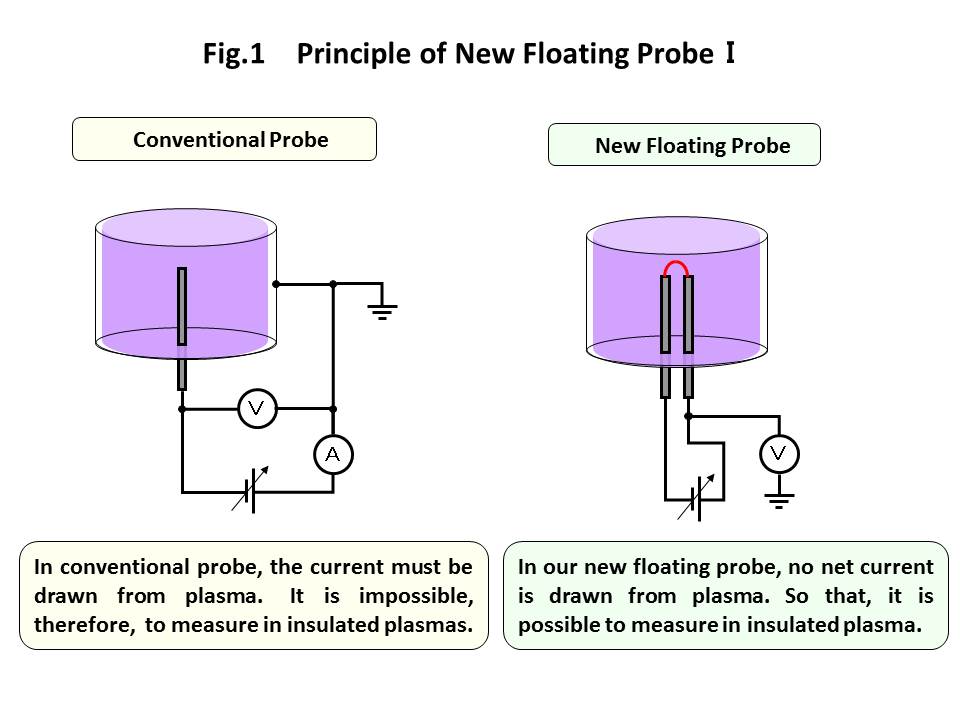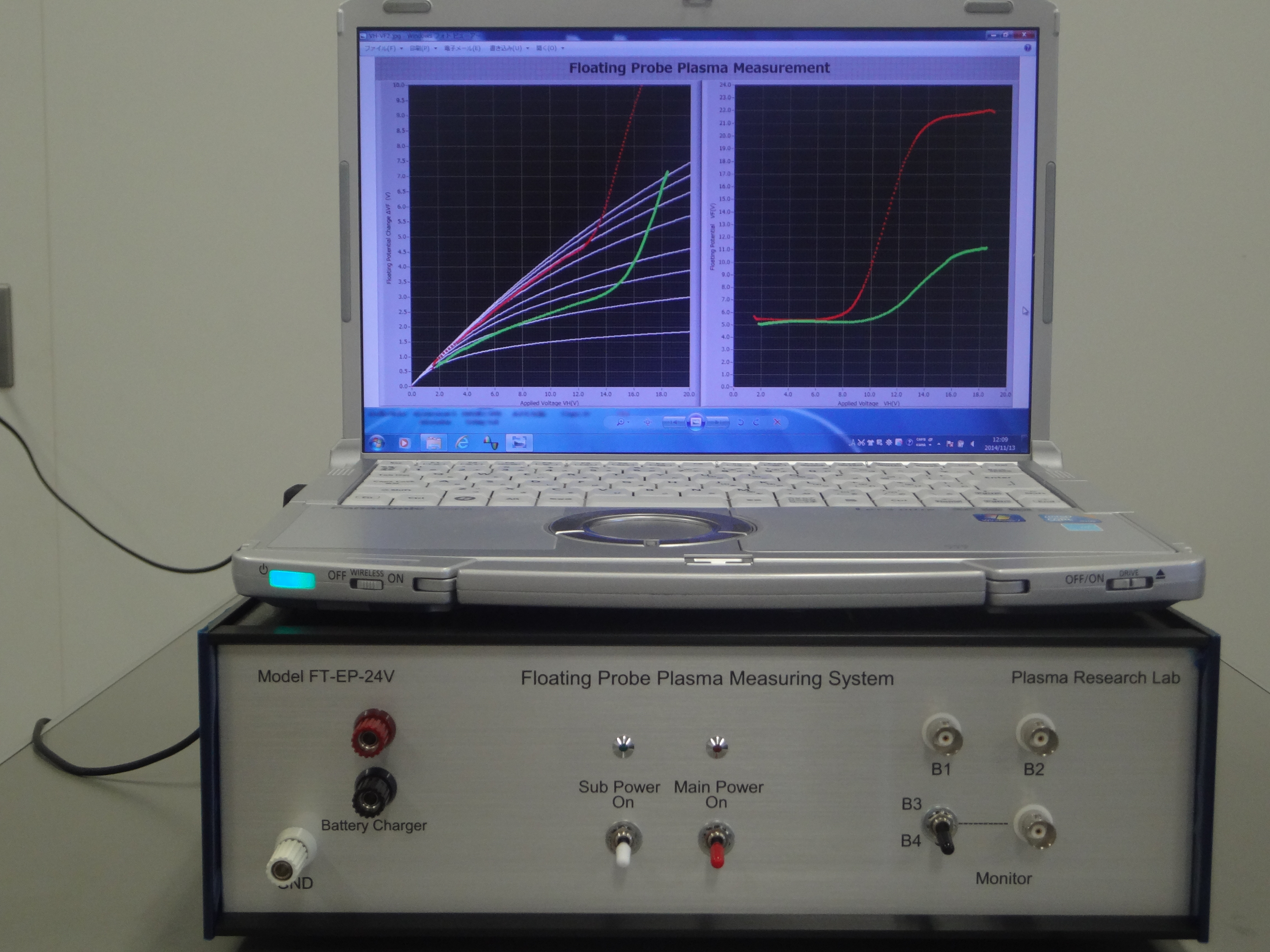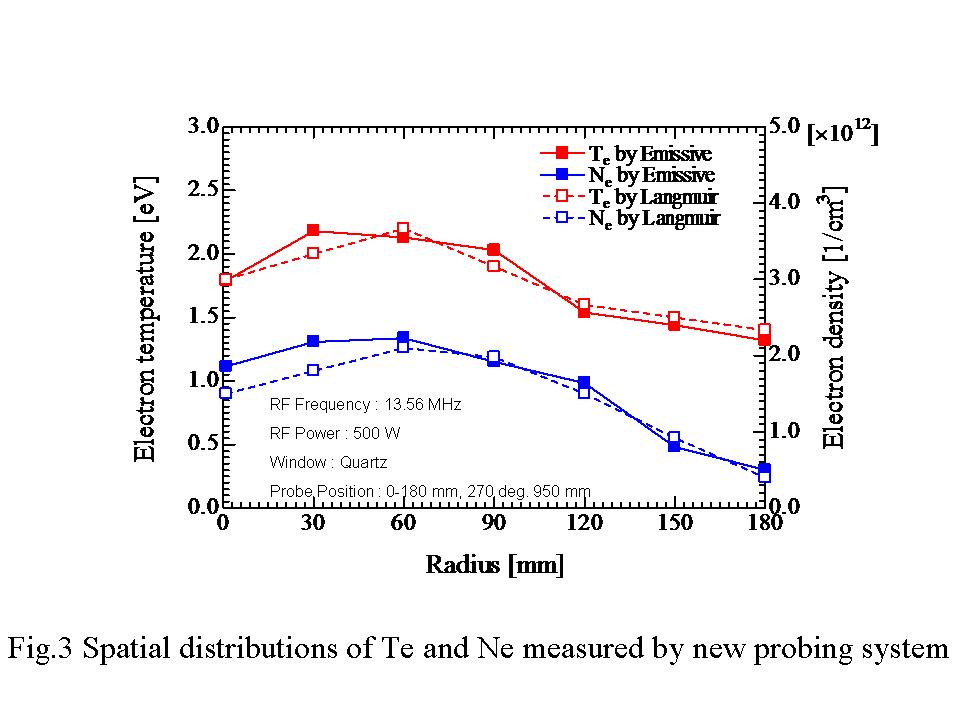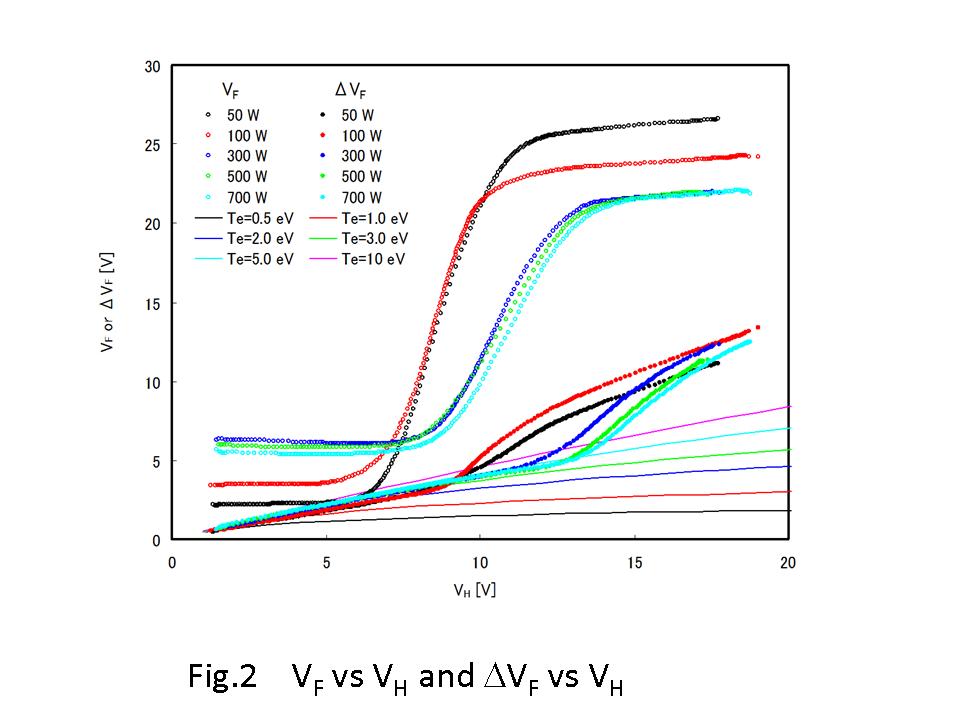「New Floating Probe System」
[Basis of New Probing System]
The plasmas, which have been employed in semiconductor fabrications and other material processing, are generally produced in insulated vessel. For the reason, conventional Langmuir probe, in which the current must be drawn from plasmas, cannot be used. Our new probing system is developed for this kind of isolated or insulated plasmas to measure. No net current is drawn from plasma and the floating potential of probe is only a measure in the system. The probe sensor is emission capable(similar to emissive probe) but it is not a necessity. In the condition of non-emission, the new probe is similar to the conventional double probe or triple probe in its principle. It is one of remarkable features that the probe sensor is deposition-free because of heating.
As shown in Fig.1, the current must be drawn from plasma in conventional Langmuir probe. Then it cannot be used if the return electrode does not exist, as for example insulated wall. In the new probe, no net current is drawn from plasma but the floating potential of probe is only measured to find plasma parameters.
Basically the floating potential is measured, when the pulse voltage of several ten kHz is applied to the probe. When it becomes electron emission capable(similar to the conventional emissive probe), the floating potential VF at the voltage-off directly shows the plasma space potential. On the other hand, the floating potential change DVF, when the pulse voltage VH is on, contains the information of plasma electron energy. From the value of DVF one can find the plasma electron temperature and density, and thus all plasma parameters can be obtained in the floating condition.


In the figure, the probing system is pictured and on the console the curve of the floating potential DVF(left) and the floating potential change VF(right) are just displayed as a function of the pulse voltage VH. The values of DVF are plotted( colored ones) together with the theoretical curves(white ones) for several electron temperatures.
[Typical Examples of Measurements by New Probing System]


In Fig.2, typical example of measurement by new probing
system is shown, in which raw data obtained in Ar ICP are plotted. In this probing system,
two data of VF vs VH and DVF vs VH are acquired. The data of VF directly show two potentials:
Plasma Space potential Vs and Floating Potential Vf, while DVF show the plasma electron temperature
and density as seen in fitting the measured points with the theoretical solid curves.
Repeat measurements of DVF vs VH provides us a set of plasma parameters as seen in Fig.3,
where the spatial distributions of elelctron temperature Te and density ne measured by new probing
system are shown compared with those by conventional method. They are quite consistent.
The new probing system is also applicable to reactive plasmas, such as etching plasma and oxygen
plasma et al, which are important in semiconductor fabrication and other material processing. It is
emphasized that the data repeatedly measured 250 times in SF6 plasma shows a good reproducibility within 5%,
indicating that the probing system is stable even in reactive plasmas. It is also confirmed that the data of oxygen
plasma measured 300 times repeatedly are fairly reproducible within 5%, indicating that the new probing system in
oxygen plasma are stable. For your further reference,the value of DVF has an overall information of plasma electron
energy, and then the electron energy distributionfunction F(E) can be derived from the mesurements of VF and DVF as a function of VH.
「Remarks」
The new probing system introduced here has several advantages over the other. First of all, the measurements are all available in the floating condition, enabling us measure the parameters of insulated plasma. Secondly the system is stable even in plasmas in which the plasma potential is strongly fluctuated, because the impedance between the probe nad plasma
is low due to electron emission. It is still on the way that the electron energy distribution function can be measred by the new probing system. It is our goal to develop the system which becomes the first in the world to be able to measure the electron energy distribution of plasma under the floating condition.




